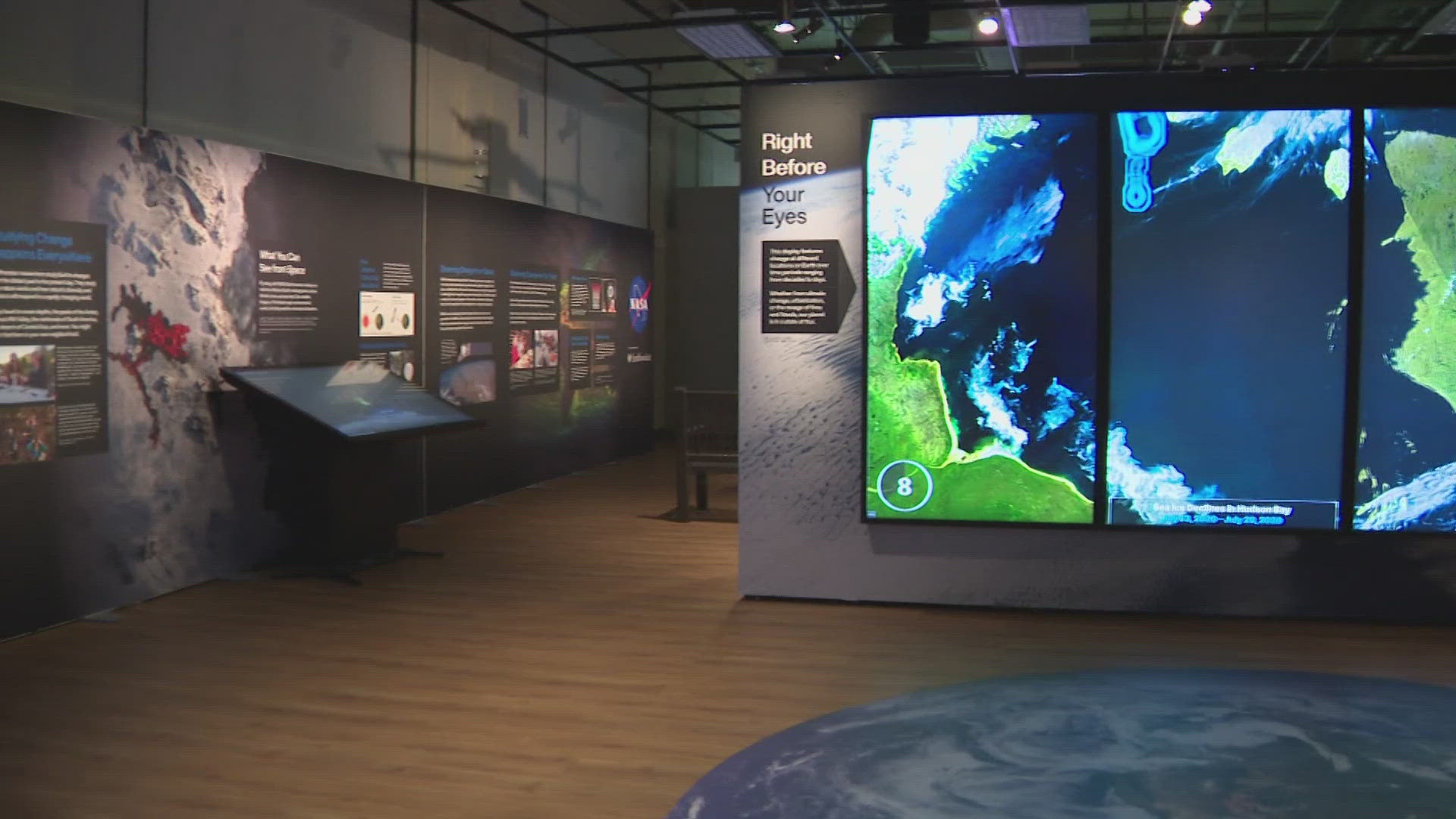WASHINGTON D.C., DC — A new exhibit is opening at the Smithsonian National Museum of Natural History this month! The 2,000 square-foot exhibition called ‘NASA’s Earth Information Center at the National Museum of Natural History’ gives people of all ages an opportunity to learn about Earth and how it’s changing.
The exhibit features a 32-foot-long, 12-foot-wide video wall and interactive elements that display data collected by NASA. The displays are meant to share the important science about our planet in a way that is easy to understand for anyone who comes to visit.
RELATED: Smithsonian's Allosaurus fossil is now the scientific standard for the prehistoric predator
Dr. Kirk Johnson is the Sant Director of the Smithsonian National Museum of Natural History, and he spoke about the exhibit saying, “This exhibit is the first step in a partnership between NASA and the Smithsonian and the reason we built this partnership is that NASA has been collecting incredible data looking towards planet Earth. We think of NASA as outer space, but a lot of the satellites look down on planet Earth and show us how our planet is changing. Meanwhile, here at the museum, we're all about planet Earth, we study the natural world in our places. Moreover, our visitors come to this museum, but this gives them a chance to see the big picture, what's happening over time and what's happening over different geographic regions of the country.”
A unique part of this exhibition is that you will be able to help make it better! The museum will interview people who check out the exhibit to ensure the information is easy to understand.
The exhibit officially opens October 8 and will remain open through 2028. It is located on the second floor near the garden lounge. The museum is open seven days a week and is free to enter!

